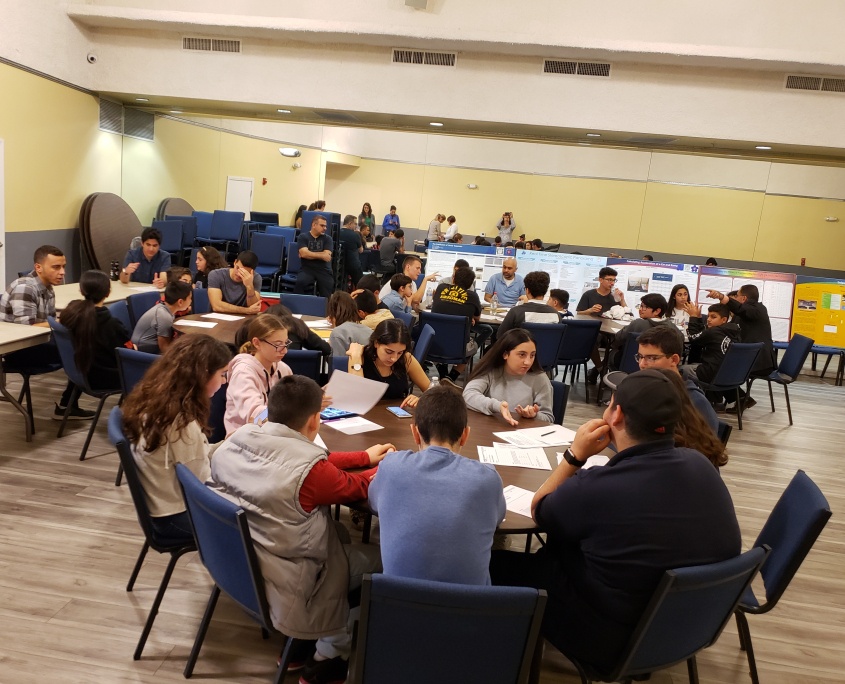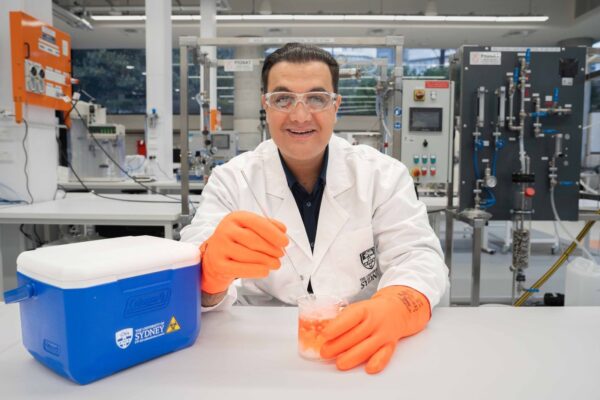The Armenian Engineers and Scientists of America (AESA) has been a beacon for fostering STEM (Science, Technology, Engineering, and Mathematics) enthusiasm among Armenian students since 1983. The 24th Annual Science Olympiad, originally scheduled for March 6–9, 2025, was set to continue this legacy, but its postponement has sparked curiosity and anticipation. Let’s dive into what makes this event a cornerstone of STEM education, its impact on young minds, and what we can expect when it returns.
What Is the AESA Science Olympiad?
The AESA Science Olympiad is an interscholastic competition designed to inspire Armenian students in grades 6–12 to explore physical and life sciences, chemistry, engineering, and robotics. Organized by the AESA Science Olympiad Committee (SOC), it encourages creativity and scientific rigor while preparing students for larger county and state competitions. Despite the 2025 event’s postponement, its mission remains to spark curiosity and innovation.
A Legacy of STEM Inspiration
Since its inception in 2002, the Olympiad has grown from a local event in Los Angeles to a global stage, including students from Armenia and Artsakh. It’s not just a competition; it’s a celebration of young Armenian talent pushing the boundaries of science.
The Postponement of the 2025 Olympiad
The 24th Annual Science Olympiad was postponed due to a leadership transition within the SOC, ensuring the event maintains its high standards. This decision, though disappointing, reflects AESA’s commitment to delivering a well-organized experience. The new dates are yet to be announced, but the anticipation is building for an even stronger comeback.
Why the Delay Matters
Postponing an event of this scale isn’t taken lightly. It ensures that students, judges, and mentors receive the best possible experience, preserving the Olympiad’s reputation for excellence. The pause allows the new chair to align resources and vision.
The Structure of the AESA Science Olympiad
The Olympiad is divided into two levels: Junior (grades 6–8) and Senior (grades 9–12). Students compete individually or in small groups, presenting projects judged on creativity, scientific approach, comprehension, and presentation. The competition adheres to California State Science Fair rules, ensuring a professional standard.
Project Categories and Evaluation
Projects span diverse fields, from physics to robotics, evaluated by STEM professionals, many with advanced degrees. Judges provide constructive feedback, helping students refine their skills for future competitions.
Key Categories
- Physical Sciences: Physics, chemistry, and related fields.
- Life Sciences: Biology, environmental science, and health.
- Engineering and Robotics: Innovative designs and prototypes.
- Social Sciences: Occasionally included for Armenia-based participants.
Why the AESA Science Olympiad Stands Out
Unlike typical science fairs, the AESA Olympiad blends cultural pride with academic rigor. It’s a space where Armenian heritage meets cutting-edge science, creating a unique environment for students to shine. The event’s global reach, including virtual participation from Armenia and Artsakh, sets it apart.
A Personal Connection to STEM
Growing up in an Armenian-American household, I remember my cousin’s excitement preparing for the 2019 Olympiad. Her project on sustainable water filtration not only won an award but also inspired her to pursue environmental engineering. Stories like hers highlight the Olympiad’s role in shaping careers.
Awards and Recognition
The Olympiad offers cash prizes and custom-made obsidian medals from Armenia, adding a cultural touch. Schools and teachers also receive recognition, fostering a community-wide commitment to STEM education.
Prize Structure
| Level | 1st Place | 2nd Place | 3rd Place | Honorable Mention |
|---|---|---|---|---|
| Junior (6–8) | $250 | $150 | $100 | $50 |
| Senior (9–12) | $250 | $150 | $100 | $50 |
Additionally, the School of the Year Award provides $300 for lab equipment, and a Teacher Appreciation Award offers $300 based on student performance.
The Impact of Recognition
These awards aren’t just monetary; they validate young scientists’ efforts. My cousin still displays her obsidian medal, a reminder of her first step into STEM.
The Role of Mentorship and Judging
Mentorship is a cornerstone of the Olympiad. Students are paired with STEM experts who guide them through project development. Judges, often seasoned professionals, provide feedback that’s both encouraging and constructive.
Who Can Judge?
- Junior Level: STEM teachers, degree-holders, or upperclassmen undergraduates.
- Senior Level: Professionals with advanced STEM degrees or five years of field experience.
This rigorous judging process ensures fairness and fosters growth, as students learn from experts’ insights.
Comparing AESA Olympiad to Other Science Fairs
| Feature | AESA Science Olympiad | California State Science Fair | National Science Olympiad |
|---|---|---|---|
| Target Audience | Armenian students | All California students | Nationwide students |
| Fields | Physical, Life, Robotics | Broad STEM fields | Broad STEM fields |
| Cultural Focus | Armenian heritage | None | None |
| Global Reach | Yes (Armenia, Artsakh) | No | Limited |
| Mentorship Program | Yes | Limited | Varies |
The AESA Olympiad’s cultural focus and global participation make it a unique platform for Armenian youth.
Pros and Cons of the AESA Olympiad
Pros:
- Culturally resonant for Armenian students.
- Global participation via virtual platforms.
- Strong mentorship and professional judging.
- Prepares students for larger competitions.
Cons:
- Postponements (like 2025) can disrupt planning.
- Limited to Armenian students, reducing diversity.
- Virtual format may lack in-person engagement.
How to Participate in the AESA Science Olympiad
Students can register through the AESA website (aesa.org) when new dates are announced. Participation is free for Armenia-based students, with a small fee for others. Projects must align with California State Science Fair guidelines, and registration typically closes a month before the event.
Steps to Get Involved
- Choose a Project: Select a topic in physical sciences, life sciences, or engineering.
- Register Online: Complete the student registration form on the AESA website.
- Seek Mentorship: Connect with a mentor through the SOC’s program.
- Prepare and Present: Submit your project and prepare for judge interviews.
Where to Find Resources
The AESA STEM Academy (stem.aesa.org) offers guides, past project examples, and mentor contacts. Local Armenian schools and community centers also provide support.
The Impact on Armenian Youth
The Olympiad has transformed lives by nurturing STEM passion. In 2022, 87 students from the U.S., Armenia, and Artsakh participated, presenting 49 projects. This global collaboration fosters a sense of community and ambition, encouraging students to dream big.
A Story of Inspiration
Take Aram, a 10th-grader from Yerevan, who competed in 2021. His robotics project earned him a mentorship with a NASA engineer, sparking a dream to work in aerospace. Such stories are common, as the Olympiad opens doors to prestigious opportunities.
People Also Ask (PAA)
What is the AESA Science Olympiad?
It’s an annual competition for Armenian students in grades 6–12, focusing on STEM fields like physical sciences, life sciences, and robotics, organized by the Armenian Engineers and Scientists of America.
When is the 2025 AESA Science Olympiad?
Originally scheduled for March 6–9, 2025, the event has been postponed. New dates will be announced on aesa.org.
How can students participate in the AESA Olympiad?
Students register online via aesa.org, submit a project in a STEM category, and prepare for judge interviews. Mentorship is available through the SOC.
**What are the benefits of the AESA Science Olympiad? காஸակடியில், 4–7 March 2025, the AESA Science Olympiad was set to be held online for Armenia-based students.
Best Tools for Preparing a Winning Project
- Tinkercad: Free online tool for designing 3D models and circuits, perfect for engineering projects.
- Canva: Create professional posters and presentations for judge interviews.
- Google Scholar: Access peer-reviewed articles for research-based projects.
- Arduino: Affordable microcontroller for robotics and electronics projects.
These tools help students create polished, innovative projects that stand out.
FAQ
Why was the 2025 AESA Science Olympiad postponed?
The event was postponed to allow a smooth leadership transition within the SOC, ensuring the competition maintains its high standards. New dates will be announced soon.
Who can participate in the AESA Science Olympiad?
Armenian students in grades 6–12 from Armenian and public schools in Los Angeles, Armenia, Artsakh, and beyond are eligible.
What types of projects are accepted?
Projects in physical sciences, life sciences, chemistry, engineering, robotics, and sometimes social sciences (for Armenia-based students) are accepted.
How are winners selected?
Judges evaluate projects based on creativity, scientific approach, comprehension, and presentation, providing feedback during interviews.
Can non-Armenian students participate?
The Olympiad is primarily for Armenian students, but public school students in Los Angeles can participate if they meet registration criteria.
Looking Ahead to the Next Olympiad
While the postponement of the 2025 AESA Science Olympiad is a setback, it’s also an opportunity for students to prepare more thoroughly. The event’s legacy of fostering STEM passion among Armenian youth remains strong, and the anticipation for its return is palpable. Keep an eye on aesa.org for updates, and start brainstorming your next groundbreaking project. The future of Armenian innovation is in your hands!





